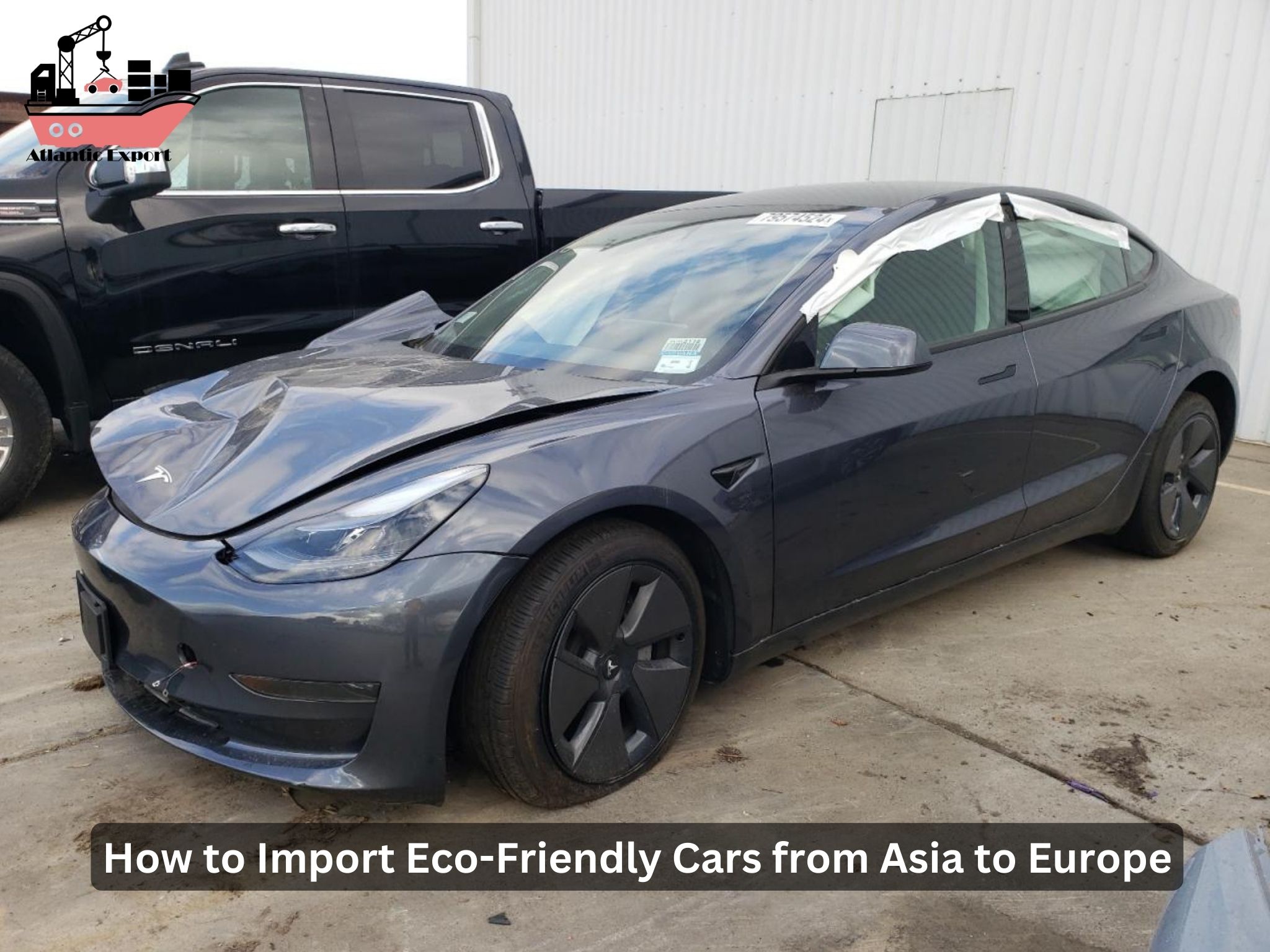Understanding the Import Process for Eco-Friendly Cars
Importing eco-friendly cars from Asia to Europe requires thorough planning, adherence to customs regulations, and compliance with environmental standards. Whether you are a business looking to expand your inventory or an individual seeking an affordable and sustainable vehicle, navigating the import process efficiently is crucial.
Why Import Eco-Friendly Vehicles from Asia?
Asian countries, especially Japan, China, and South Korea, are leaders in the production of electric vehicles (EVs), hybrid cars, and low-emission vehicles. These markets offer:
- Cost-effective pricing compared to European counterparts
- Advanced automotive technology and high efficiency
- Diverse selection of new and used cars
- Reduced carbon footprint, aligning with the EU’s environmental goals
Key Steps to Importing Eco-Friendly Vehicles
1. Research Import Regulations and Compliance Standards
Before importing a car, you must understand the import regulations in the European Union (EU). Each country has specific standards, including safety requirements, emission limits, and taxation policies. The EU primarily follows the Euro 6 emission standard, ensuring imported vehicles meet strict environmental guidelines.
Key Compliance Aspects:
- Certificate of Conformity (CoC) – Ensures that the vehicle meets EU regulations
- Emission Standards – Compliance with Euro 6 or newer emission standards
- Technical Inspection and Type Approval – Some non-EU vehicles require additional inspection and approval
2. Choose a Reliable Supplier or Car Trader
Sourcing your vehicle from a trusted dealer, auction house, or manufacturer is critical to avoiding counterfeit or non-compliant vehicles. Consider reputable companies in:
- Japan – Popular for used cars from Toyota, Nissan, and Honda
- China – Major hub for EV manufacturers like Xpeng, BYD, and NIO
- South Korea – Offers fuel-efficient options from Hyundai and Kia
3. Select the Right Shipping Method
International car shipping methods include Roll-On/Roll-Off (RoRo) and containerized shipping. Each method has distinct advantages:
- RoRo Shipping – Cost-effective but less secure
- Container Shipping – Higher security and suitable for high-value electric vehicles
4. Customs Clearance and Import Duties
Once the vehicle arrives in Europe, it must pass through customs clearance. Importers must prepare essential documents such as:
- Bill of Lading – Proof of shipment
- Invoice and Proof of Purchase
- Certificate of Origin – Determines applicable import duties
- Emission and Compliance Documentation
5. Paying Import Duties and Taxes
The import duty varies by vehicle type and origin. The following fees apply to imported cars:
- Import Duty Tax – Typically 10% for non-EU vehicles
- Value-Added Tax (VAT) – Ranges from 19-25% depending on the EU country
- Customs Duties and Levies – Additional fees depending on engine capacity and CO2 emissions
6. Registering the Imported Vehicle in Europe
Once your car has cleared customs, it must be registered before use. The process includes:
- Vehicle Inspection – Ensuring roadworthiness and compliance
- Emission Testing – Confirming adherence to Euro 6 or other local standards
- Registration with Local Authorities – Obtaining an official license plate
Special Considerations for Electric Vehicles (EVs)
Electric vehicles (EVs) follow a slightly different import process, often with tax exemptions and incentives to promote sustainability.
Benefits of Importing EVs to Europe:
- Lower Import Taxes or Tax-Free Imports in Some Countries
- Government Incentives for Eco-Friendly Vehicles
- Exemption from Road Tax and Congestion Charges in Certain Cities
Important EV Import Requirements:
- Battery Certification – Ensures compliance with EU safety regulations
- Charging Standards Compatibility – EU primarily uses Type 2 and CCS charging standards
- Technical Inspection – Some EVs may require an additional compliance check
Challenges and Common Pitfalls in the Import Process
1. Unexpected Costs and Fees
Many importers underestimate total costs, including:
- Storage Fees at the Port
- Additional Customs Duties
- Unforeseen Transport Costs
2. Delays in Customs Clearance
To avoid delays, ensure all documentation is in order before the vehicle arrives at its final destination.
3. Non-Compliance Issues
Failure to meet safety and emission standards could result in vehicle rejection or modifications before approval.
Why Choose Atlantic Export for Your Car Imports?
At Atlantic Export, we specialize in seamless vehicle importation, handling everything from sourcing and shipping to customs clearance and registration. Our expertise ensures that your eco-friendly vehicle import meets all European regulations while minimizing costs and delays.
Final Thoughts on Importing Eco-Friendly Cars
Importing an eco-friendly car from Asia to Europe is an excellent way to access affordable, high-quality, and sustainable vehicles. By following the correct import process, ensuring compliance with EU standards, and working with a reliable partner like Atlantic Export, you can efficiently import and register your vehicle without unnecessary complications.
FAQs
1. What are the key documents required for importing a car to Europe?
The key documents include the Bill of Lading, Certificate of Conformity, Emission Test Results, Proof of Purchase, and Customs Clearance Documentation.
2. How much does it cost to import an electric vehicle from Japan or China?
The total cost includes the vehicle price, shipping fees, import duties (10%), VAT (19-25%), and additional registration costs, depending on the country.
3. Can I import a used eco-friendly car to Europe?
Yes, but used cars must meet Euro 6 emission standards, safety requirements, and technical inspections before registration.
4. Is there a tax exemption for electric vehicle imports?
Some EU countries offer tax exemptions or reduced VAT rates for imported EVs, depending on government incentives.
5. How long does the car import process take?
The import process usually takes 4-8 weeks, depending on the shipping method, customs clearance, and local registration requirements.

Leave a Reply